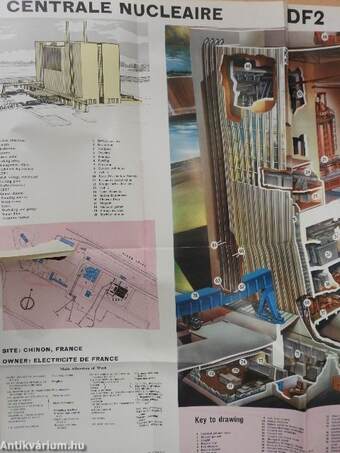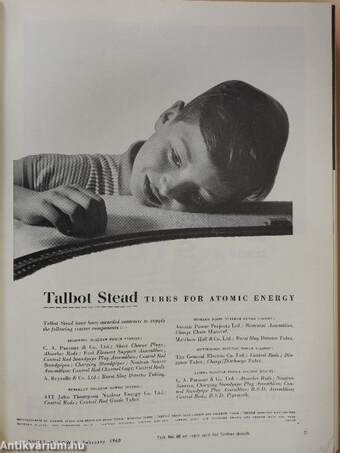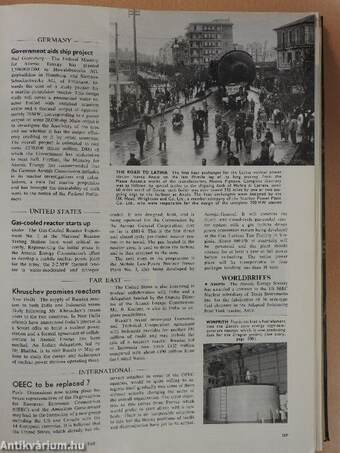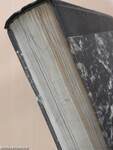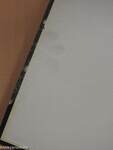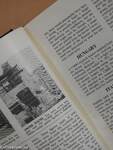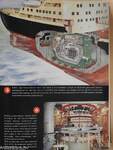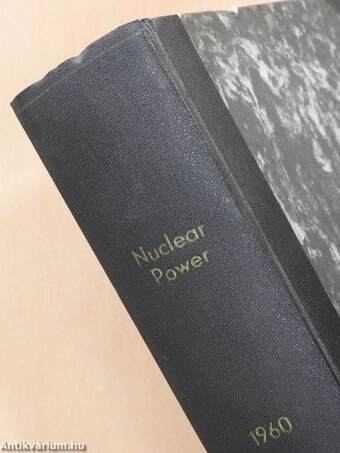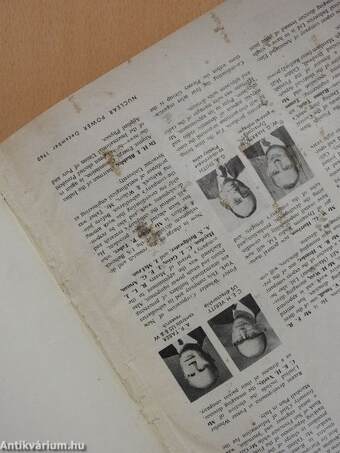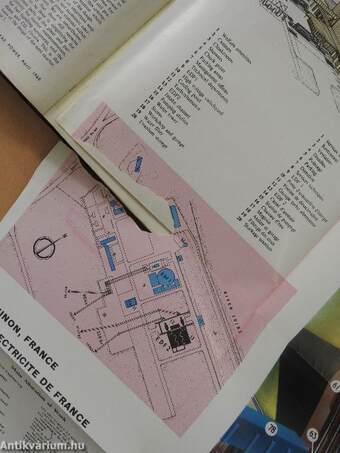1.115.944
kiadvánnyal nyújtjuk Magyarország legnagyobb antikvár könyv-kínálatát
Nuclear Power January-December 1960.
Reactors - Materials - Instrumentation - Processes - Radiation - Vol 5 No 45-56. (1-12.)
| Kiadó: | Rowse Muir Publications Limited |
|---|---|
| Kiadás helye: | London |
| Kiadás éve: | |
| Kötés típusa: | Könyvkötői kötés |
| Oldalszám: | 1.680 oldal |
| Sorozatcím: | Nuclear Power |
| Kötetszám: | |
| Nyelv: | Angol |
| Méret: | 29 cm x 22 cm |
| ISBN: | |
| Megjegyzés: | Teljes évfolyam. Fekete-fehér és színes fotókkal, ábrákkal, kihajtható melléklettel. |
naponta értesítjük a beérkező friss
kiadványokról
naponta értesítjük a beérkező friss
kiadványokról
Előszó
SIR: I should like to comment on the argument Mr. Blair advances (View-points, December) in favour of dose-meters rather than film badges and to point out somé of the disadvan-tages of the... Tovább
Előszó
SIR: I should like to comment on the argument Mr. Blair advances (View-points, December) in favour of dose-meters rather than film badges and to point out somé of the disadvan-tages of the instruments. 1. Mr. Blair's first point is that the dose to the operator can be read at any moment. This is not true unless operators are exposed in a high radia-tion field which is most undesirable and, I hope, not common practice in industrial radiography. On the most sensitive quartz fibre electrometer pre-sently available (0-0-2 r), one hour's exposure at the rate of 7*5 mr/h re-presents a needle movement of only 3-75% of a scale about 0-5 in. (1-27 cm) in length, in other words a needle movement of about 0-02 in. (0*05 cm). Minute to minute reading as implied must of necessity be use-lessly inaccurate.
On the other hand, should an operator accidentally receive a rela-tively large dose (and this is not as uncommon as it should be), it is pos-sible that his dosemeter will be off scale and all direct evidence of the actual dose received is lost—a point of extreme importance from the medico/legal aspect should any subse-quent claims for injury or ill health arise. This is a point which must be given careful and deliberate consider-ation in view of forthcoming legisla-tion.
Surely the logical and safe method of controlling exposure is by the use of battery-operated doserate moni-tors to establish conditions and en-sure working levels are acceptable and to equip personnel with film badges. Pocket electrometers can fill a useful, but supplementary function
under these circumstances, but to rely on them as a first or last line of defence is completely unacceptable, especially in view of their shortcom-ings.
2. The second point, on the confi-dence and sense of security of operators, implies a possibility of an over-dose. This surely puts the cart be-fore the horse. The system of exposing or transferring isotopes or the ener-gizing of an X-ray tűbe on a routine basis should be so established, de-signed, and controlled that overdoses are impossible providing a recognized drill is followed. The operators sense of security then follows automatically. In my fairly wide experience no lack of confidence in a film badge system supplemented with monitoring sur-veys has ever been expressed. As stated previously, however, the wear-ing of dosemeters supplementary to films is only common prudence when conditions are largely unknown or when entering an area of high radia-tion for emergency repair work.
3. Somé of the disadvantages of quartz fibre electrometers are: —
a. No 4 automatic' permanent record is produced as with a film badge.
b. Possibility exists of falsé readings (high or low) as a result of knocking or dropping the instrument.
c. Instruments are largely insensitive to beta radiation: that from a Co-60 source for instance can be not incon-siderable.
d. Absolute dependence upon the humán element (which varies signi-ficantly from person to person) is necessary in the conscientious re-charging, zeroing, reading and record-ing of results. All that is necessary with a film badge is to ensure that it is worn and changed at predetermined intervals. This assumes that the film processing and assessing system is de-pendable and this of course is a pre-requisite.
e. Initial cost is high (L10) and due to the nature of construction the instruments are somewhat delicate. The initial cost of one instrument can be expected to cover the cost of film badges, changed on a weekly basis, for one person for two years at least.
In conclusion I would say that I should be extremely sceptical of any
radiation exposing records based on this system of personnel monitoring. Senior Health Physicist, d. j. mathias Aíomic Energy Division, General Electric Co. Ltd.
DOUNREAY SCOOP
Many of the readers who have written to congratulate nuclear power on its Dounreay scoop have expressed amazement at the speed of the whole thing. How, they ask, did we manage to come out with a fourteen page section on the fast reactor, in-cluding a first-hand account of the commissioning, five days after it first started up, especially since the project was eighteen months behind schedule, and no one could be certain when it would actually go into opera-tion. The explanation is really quite simple. An article on the instrumentation had been com-missioned somé months before, and after doing a bit of crystal gazing, the Editor decideci to run it in the December issue. Meanwhile, the Works Manager at Dounreay worked on an article describing the final stages of commissioning, keeping it up-to-date and clearing it with the Atomic Energy Authority as he went along. By Friday, November 13, the last problems had been overcome and start-up seemed only a matter of hours away. By this time, of course, the magaziné contents had been settled—and most of it printed —but such an important story called for emergency measures, so the printing of the last six-teen pages was halted. On the Saturday morning at 11 o'clock, the fast reactor went into opera-tion. The article was completed, flown down to a priváté air-field near London and was in the hands of nuclear power staff by the time the first an-nouncement of the startup was made by the BBC. Vissza
Témakörök
- Idegennyelv > Idegennyelvű könyvek > Angol > Műszaki
- Idegennyelv > Idegennyelvű könyvek > Angol > Természettudományok > Fizika
- Idegennyelv > Idegennyelvű könyvek > Angol > Folyóiratok, újságok
- Folyóiratok, újságok > Műszaki
- Műszaki > Ipar > Nehézipar > Energiaipar > Atomenergia
- Természettudomány > Fizika > Atom- és magfizika > Általában
- Természettudomány > Fizika > Folyóirat, közlemény
- Természettudomány > Fizika > Idegennyelvű
- Folyóiratok, újságok > Természettudományok > Fizika
- Műszaki > Idegennyelv > Angol
- Műszaki > Folyóiratok, közlemények > Nehézipar
- Műszaki > Folyóiratok, közlemények > Idegennyelv
- Műszaki







